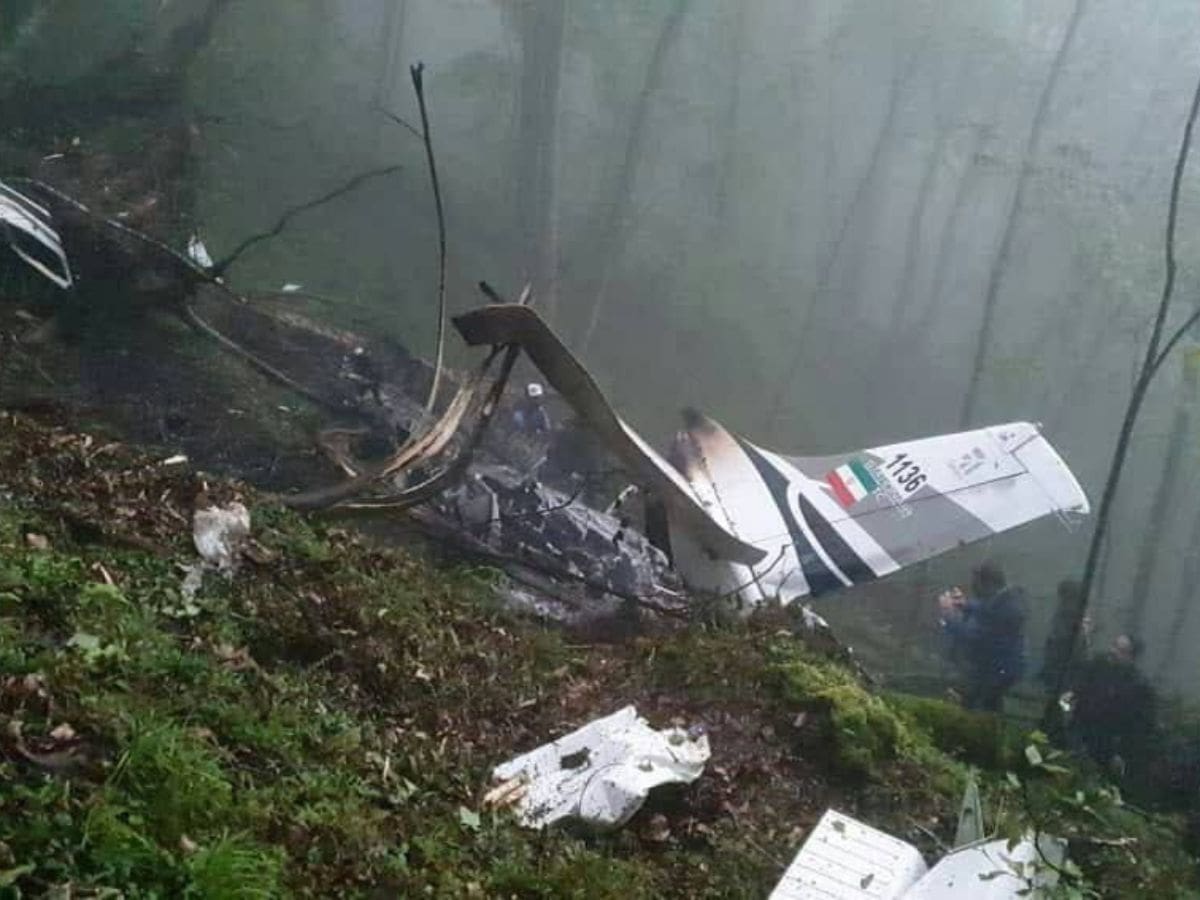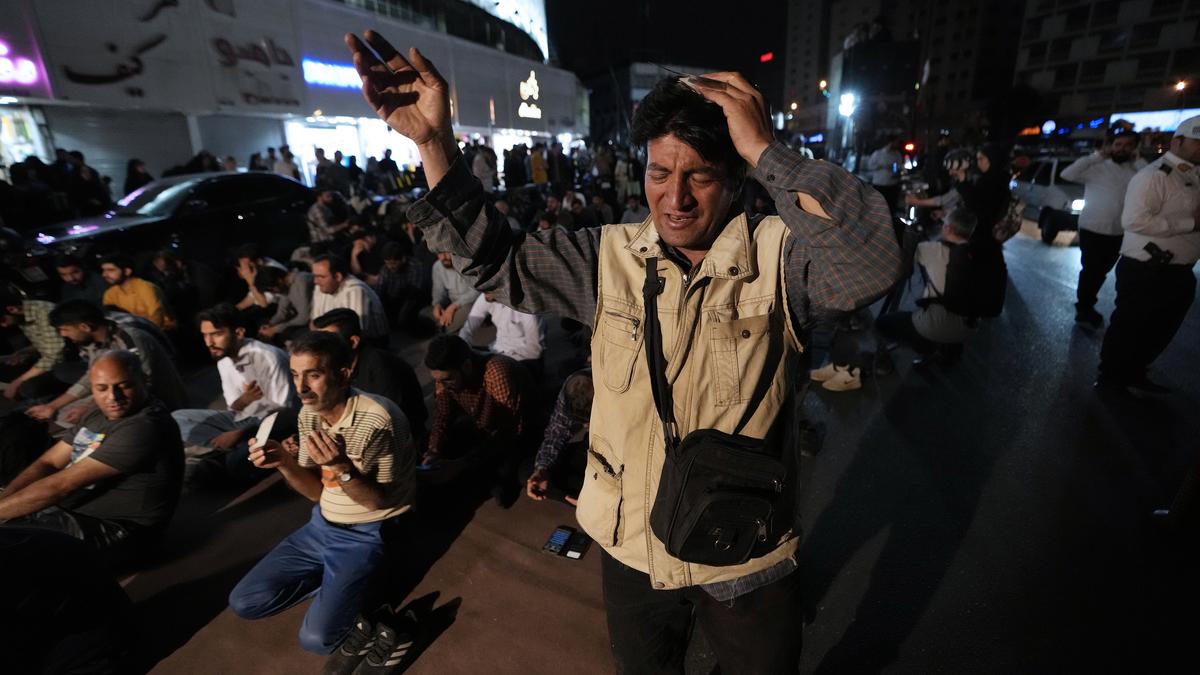Historical Context of Iranian Helicopter Industry

Iran helicopter – The Iranian helicopter industry has a rich history, dating back to the 1960s. The industry’s origins can be traced to the establishment of the Iranian Helicopter Support and Renewal Company (IHSRC) in 1963. IHSRC was responsible for providing maintenance and support services for the Iranian military’s helicopter fleet.
In the 1970s, Iran embarked on an ambitious program to expand its helicopter industry. This program included the establishment of several helicopter manufacturing and assembly plants, as well as the acquisition of technology and expertise from foreign companies. One of the most significant foreign collaborations was with the American company Bell Helicopter, which provided Iran with the technology to produce the Bell 214 helicopter under license.
The recent disappearance of an Iranian helicopter has raised concerns about the safety of the country’s leadership, including President Hassan Rouhani . The helicopter, which was carrying several high-ranking officials, went missing over the Caspian Sea. The search for the helicopter and its occupants is ongoing, but no sign of the aircraft has been found.
The incident has sparked speculation about the fate of President Rouhani and other Iranian officials who may have been on board the helicopter.
Role of Foreign Collaborations and Technology Transfers, Iran helicopter
Foreign collaborations and technology transfers played a crucial role in the development of the Iranian helicopter industry. These collaborations provided Iran with access to advanced technology and expertise, which enabled it to establish a domestic helicopter manufacturing capability. The transfer of technology also allowed Iran to develop its own indigenous helicopter designs, such as the Shahed 285 and the Saeqeh.
Today, the Iranian helicopter industry is a major player in the global helicopter market. Iranian-made helicopters are used by both the Iranian military and civilian operators. The industry has also exported helicopters to several countries, including Iraq, Syria, and Lebanon.
The skies of Iran have witnessed a tragic helicopter crash, leaving behind a trail of sorrow. Such accidents, like the recent helicopter crash , are a grim reminder of the risks involved in aerial travel. The Iranian helicopter, once a symbol of progress, now lies shattered, a testament to the fragility of human endeavor.
Current State of Iranian Helicopter Manufacturing: Iran Helicopter

The Iranian helicopter manufacturing sector has made significant strides in recent years, establishing itself as a key player in the region. The industry boasts advanced capabilities and a growing production capacity, catering to both domestic and international markets.
Production Capabilities and Types of Helicopters
Iranian helicopter manufacturers have developed a diverse range of helicopters, including light utility, medium-lift, and attack helicopters. Notable models include the Bell 206, AgustaWestland AW109, and Shahed 285.
Production volumes have increased steadily, with an estimated output of over 100 helicopters per year. The industry has also made technological advancements, incorporating modern avionics, navigation systems, and weapons platforms into its products.
Strengths and Weaknesses
Strengths:
- Advanced manufacturing facilities
- Skilled workforce
- Strong domestic demand
- Government support for research and development
Weaknesses:
- Limited access to international markets due to sanctions
- Dependence on imported components
- Need for further investment in infrastructure
Challenges and Opportunities
The Iranian helicopter manufacturing industry faces challenges, including the impact of sanctions and the need for increased investment. However, it also presents opportunities for growth.
Opportunities include expanding exports to regional markets, developing new helicopter models, and collaborating with international partners to gain access to advanced technologies.
Key Manufacturers and Products
Iran’s helicopter industry has a rich history, with several major manufacturers contributing to its growth. These manufacturers have developed a diverse range of helicopters to meet the needs of both domestic and international markets.
One of the most prominent manufacturers is the Iranian Aircraft Manufacturing Industrial Company (IAMI). IAMI has a market share of over 50% and produces a wide range of helicopters, including the Bell 206, Bell 412, and Bell 429. These helicopters are used for a variety of purposes, including law enforcement, search and rescue, and transportation.
Another major manufacturer is the Pars Aviation Company. Pars Aviation has a market share of around 30% and produces the Shahed 285 and Shahed 278 helicopters. These helicopters are primarily used for military purposes, including reconnaissance and attack missions.
The recent incident involving an Iranian helicopter has raised concerns about the safety of the country’s leadership. While the helicopter crash remains under investigation, some have speculated that it may be linked to the disappearance of Iran’s president, who has been missing for several days.
The helicopter, which was carrying senior military officials, crashed in a mountainous region near the Iranian border. The cause of the crash is still unknown, but it has sparked fears that the president may have been on board.
In addition to IAMI and Pars Aviation, there are several other smaller manufacturers in Iran that produce a variety of helicopters. These manufacturers include the Iran Helicopter Support and Renewal Company (IHSRC), the Iranian Helicopter Industries (IHI), and the Qods Aviation Industry (QAI).
The Iranian helicopter industry has a strong focus on research and development. Several Iranian universities and research institutions are working on developing new helicopter technologies, including unmanned aerial vehicles (UAVs) and hybrid-electric helicopters.
IAMI
- Bell 206: A light utility helicopter used for a variety of purposes, including law enforcement, search and rescue, and transportation.
- Bell 412: A medium-lift helicopter used for a variety of purposes, including passenger transport, cargo transport, and medical evacuation.
- Bell 429: A light twin-engine helicopter used for a variety of purposes, including law enforcement, search and rescue, and transportation.
Pars Aviation Company
- Shahed 285: A light attack helicopter used for reconnaissance and attack missions.
- Shahed 278: A medium-lift helicopter used for a variety of purposes, including passenger transport, cargo transport, and medical evacuation.
Domestic and International Market Analysis
The Iranian helicopter market is expected to grow in the coming years, driven by factors such as increasing demand for air transportation, expansion of oil and gas exploration activities, and government initiatives to support the domestic helicopter industry.
The market is dominated by a few key players, including Iran Helicopter Support and Renewal Company (IHSRC), Panha Helicopter Manufacturing Company, and Qods Aviation Industry Company. These companies offer a range of helicopter models, including light, medium, and heavy helicopters, for various applications such as transportation, search and rescue, and military operations.
Domestic Market
The domestic market for helicopters in Iran is significant, with demand coming from various sectors such as oil and gas, transportation, emergency services, and the military.
- The oil and gas sector is a major driver of demand for helicopters, as they are used for transportation of personnel and equipment to offshore platforms and remote exploration sites.
- The transportation sector is another key market for helicopters, with demand for air taxis and charter services growing in recent years.
- Emergency services also rely on helicopters for search and rescue operations, medical evacuations, and disaster response.
- The military is a major user of helicopters for various purposes, including troop transport, reconnaissance, and combat operations.
International Market
Iranian helicopter manufacturers have the potential to export their products to various international markets, particularly in the Middle East, Africa, and Asia.
- The Middle East region offers significant opportunities for Iranian helicopter exports, as there is a growing demand for helicopters for various applications, including oil and gas exploration, transportation, and military operations.
- Africa is another potential market for Iranian helicopters, as there is a need for helicopters for transportation, emergency services, and peacekeeping operations in many African countries.
- Asia also presents opportunities for Iranian helicopter exports, particularly in countries with large populations and growing economies, such as India, China, and Southeast Asian countries.
However, Iranian helicopter manufacturers face several challenges in entering international markets, including competition from established foreign manufacturers, export restrictions, and lack of international certification.
Technological Advancements and Innovations

The Iranian helicopter industry has witnessed significant technological advancements in recent years, driven by research and development initiatives and the adoption of new materials and technologies. These advancements have led to improved helicopter design, performance, and safety.
One notable area of innovation is the development of advanced composite materials, which are lighter and stronger than traditional materials. The use of these materials has enabled the design of helicopters with enhanced aerodynamic efficiency and reduced weight, resulting in improved fuel efficiency and increased payload capacity.
Research and Development Initiatives
Iranian research institutions and universities play a vital role in advancing the helicopter industry through research and development initiatives. These initiatives focus on developing new technologies, materials, and design concepts to improve helicopter performance and safety.
One example of a successful research initiative is the development of a new helicopter rotor system by the Iran Aviation Industries Organization (IAIO). This system incorporates advanced aerodynamic design principles to reduce noise and vibration, enhancing passenger comfort and reducing the helicopter’s environmental impact.
New Materials and Technologies
The Iranian helicopter industry has also embraced new materials and technologies to enhance helicopter design and performance.
- Advanced Avionics: Modern helicopters are equipped with advanced avionics systems that provide pilots with enhanced situational awareness and control. These systems include glass cockpits, digital flight controls, and integrated navigation systems.
- Lightweight Materials: The use of lightweight materials, such as carbon fiber composites, has significantly reduced the weight of helicopters, resulting in improved fuel efficiency and increased payload capacity.
- Advanced Propulsion Systems: Iranian helicopter manufacturers are exploring new propulsion systems, such as hybrid-electric and fully electric powertrains, to improve efficiency and reduce emissions.
Impact on Helicopter Design and Performance
The technological advancements and innovations in the Iranian helicopter industry have had a significant impact on helicopter design and performance.
- Improved Aerodynamic Efficiency: The use of advanced composite materials and aerodynamic design principles has resulted in helicopters with reduced drag and improved lift-to-drag ratios, leading to enhanced fuel efficiency and increased range.
- Enhanced Maneuverability: Advanced flight control systems and new rotor designs have improved the maneuverability and stability of helicopters, making them more agile and responsive in various flight conditions.
- Increased Safety: The adoption of advanced avionics systems and new safety features has significantly enhanced the safety of Iranian helicopters, reducing the risk of accidents and improving passenger confidence.
Future Prospects and Industry Trends
The Iranian helicopter industry is poised for significant growth in the coming years, driven by technological advancements, increasing market demand, and favorable global trends.
Technological advancements in areas such as avionics, propulsion systems, and materials science are expected to enhance the capabilities and efficiency of Iranian helicopters, making them more competitive in the global market.
Growth Areas
- Civil and Commercial Helicopters: Growing demand for transportation, tourism, and emergency response services is expected to drive growth in the civil and commercial helicopter segment.
- Military Helicopters: Iran’s defense modernization efforts and the need for advanced aerial platforms are expected to boost the demand for military helicopters.
- Unmanned Aerial Vehicles (UAVs): The increasing adoption of UAVs for surveillance, reconnaissance, and combat missions is expected to create new opportunities for the Iranian helicopter industry.
Challenges and Opportunities
- International Sanctions: International sanctions have hindered the Iranian helicopter industry’s access to foreign technology and investment. However, recent diplomatic efforts have led to a gradual easing of sanctions, which could provide opportunities for collaboration and partnerships.
- Technology Transfer: Acquiring advanced technologies from foreign partners remains a challenge for the Iranian helicopter industry. However, strategic alliances and joint ventures can facilitate technology transfer and knowledge sharing.
- Skilled Workforce: Developing a highly skilled workforce is crucial for the industry’s long-term growth. Investing in education and training programs can ensure the availability of qualified engineers and technicians.